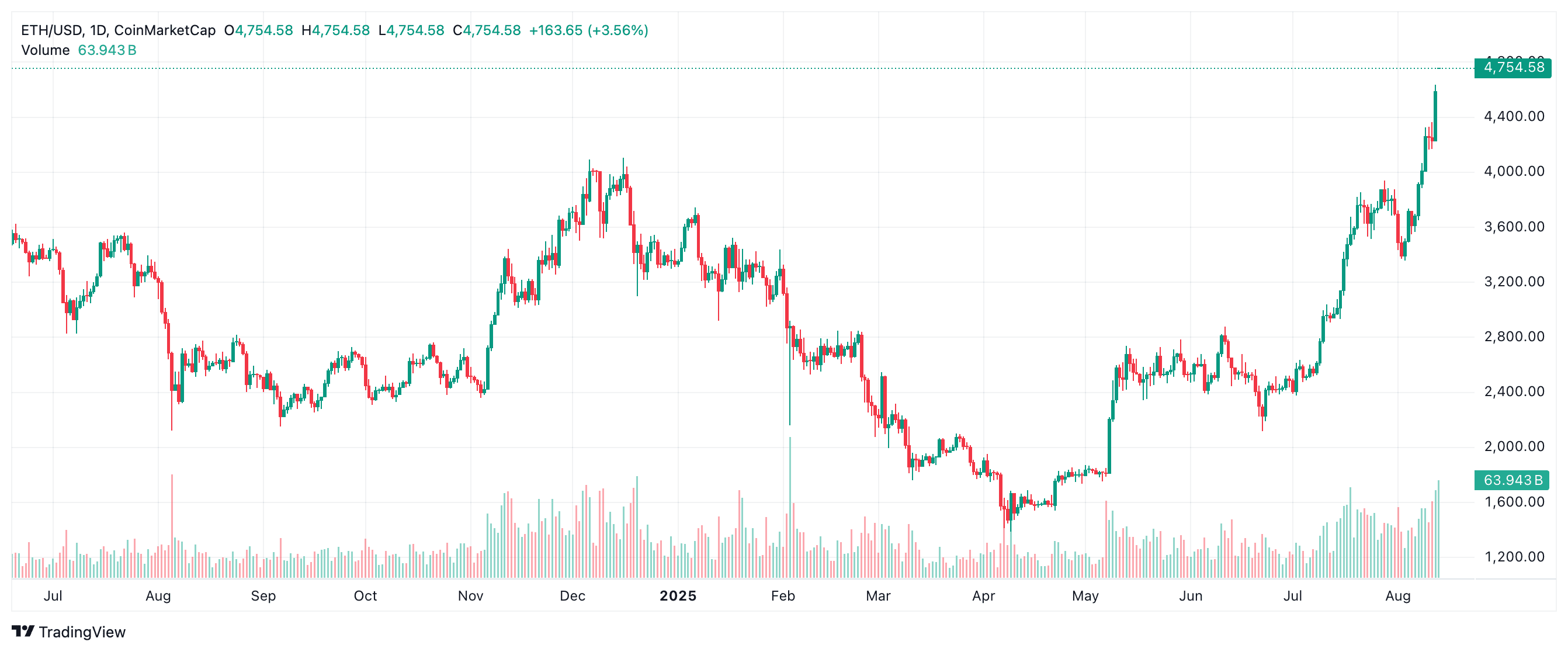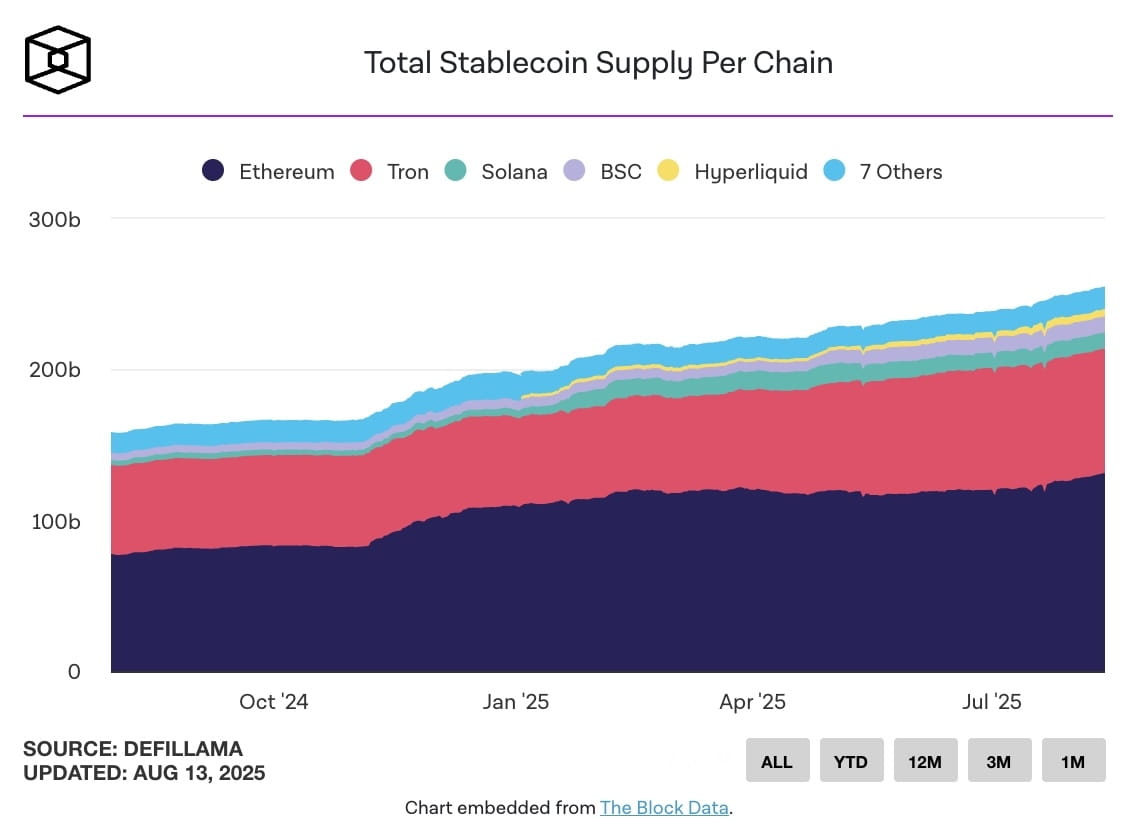Ethereum is approaching its historical peak not due to a single factor, but as a combination of strong institutional inflows, clarity about the legal framework, and improved market sentiment, turning skeptics into investors.
Spot Ethereum ETF funds are recording unprecedented demand, including a single day of net inflows of up to $1 billion. Additionally, new policies – from the White House allowing 401(k) retirement funds to access alternative assets, to stablecoin regulations in the GENIUS Act – have provided financial institutions with a clearer framework to engage in the market.
Ira Auerbach, Director of Tandem at Offchain Labs, remarked that the combination of 'policy, products, and infrastructure' is creating 'a playbook that allows innovation to return to the US and paves the way for ETH to break through and maintain above its historical peak.'
Corporate moves also contribute to driving prices. Kevin Rusher, founder of the real asset lending and borrowing platform RAAC, noted that more companies are diversifying their digital asset portfolios beyond Bitcoin. He called this a "reasonable business vision" and a "strong affirmation for the global computer," also pointing out that 97% of ETH investors are currently profitable. Although this level of profit may lead to short-term profit-taking, he believes the long-term trend remains positive.
"When will ETH reach $6,000? Of course it will," Rusher asserted via email. "And anyone who didn't board when the price was only $300 will regret it like those who used Bitcoin to buy pizza at Papa John's."
Earlier on Wednesday, analysts at Standard Chartered raised their year-end price forecast for Ethereum from $4,000 to $7,500. At the time of publication, the price of ETH was trading around $4,724, up 4.83% in the past 24 hours, compared to the historical peak of $4,878 in November 2021.

Not all upward momentum comes from fundamental factors. Luke Nolan, a senior research analyst at CoinShares, believes that although the Pectra upgrade in May did not directly impact ETH prices, the market sentiment at that time was overly negative, so "just a small positive signal is enough to create a shift." As a result, there was a short squeeze coinciding with the passage of the GENIUS Act and renewed interest in Ethereum's role in stablecoins and the tokenization of real assets – a sector in which ETH holds about 58% market share.
"I think the majority of the market still does not hold enough ETH, so many people are on the sidelines or starting to buy, which drives the price up," Nolan noted. "There will likely be a correction when it touches or exceeds the historical peak, but if the overall market remains stable, the larger upward trend is not over yet."

As prices approach the peak, many in the industry emphasize that the market cycle does not change the foundational work. Charles Wayn, co-founder of web3 growth platform Galxe, stated that this is evidence of the "persistent efforts of the builder community," who are "always loyal and steadfast even during tough times."
Currently, ETH is still trading below its historical peak and ETF inflows continue to be strong. The market is in a state of waiting, monitoring whether new capital and policy momentum can propel the second-largest cryptocurrency into unprecedented price territory.